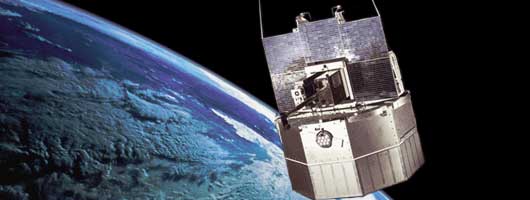OSO-7
Orbiting Solar Observatory-7

Cosmic X-ray Experiment
Detector | Electronics | Particle Monitors | Response | Background
The UCSD OSO-7 Cosmic X-ray Experiment detector system consisted of the central detector and the shield, which had two parts: 1) the well and 2) the collimator. The central detector -- a NaI(Tl) scintillation crystal -- was surrounded by a large CsI(Na) shield counter equipped with collimating holes giving an aperture response of 6.54 degrees, Full Width at Half Maximum. The active anticoincidence feature of the shield suppressed background events that would otherwise have resulted from charged particles, and x-rays from radioactive decays in the instrument, striking the central detector.
 The central detector had 64 cm2 of effective area, was 1 cm thick, and was viewed through a 1.2 cm thick quartz lightguide by an RCA C31009 3" photomultiplier tube. The central crystal entrance window was 0.5 mm thick beryllium, as was another window covering the top of the collimator section of the shield. The central detector was sensitive to x-rays in the 6--500 keV range.
The central detector had 64 cm2 of effective area, was 1 cm thick, and was viewed through a 1.2 cm thick quartz lightguide by an RCA C31009 3" photomultiplier tube. The central crystal entrance window was 0.5 mm thick beryllium, as was another window covering the top of the collimator section of the shield. The central detector was sensitive to x-rays in the 6--500 keV range.
The shield counter had an average thickness of about 4 cm and a total surface area of 2440 cm2. The shield crystals were viewed by six RCA C70132A 1.5" photomultiplier tubes, whose outputs were summed. The effective energy range of the shield counter was about 50 keV to 1 MeV.
A nominal cosmic x-ray event was one that passed through the holes in the collimator section of the shield and interacted within just the central detector. This would provide a signal from the central detector but none from the shield counter. Any signal from the central detector that was simultaneous with a signal from the shield counter was discarded as a possible non-x-ray event.
OSO-7 Information
Mission Objectives
Spacecraft
Cosmic X--ray Experiment
Solar X--ray Experiment
Results
Publication